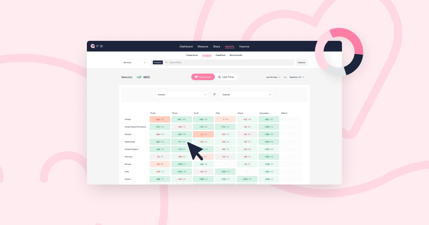If your IT organization is focused on improving its operations and outcomes, then it’s likely using service level agreement (SLA) documents. Or, at a more operational level, it’s using the service-level metrics and targets (which it might also call SLAs) from the SLA documents to understand its performance and to drive improvement.
SLAs – both the documents and targets – have long been a part of the ITIL body of IT service management
(ITSM)
best practice guidance, and all the popular ITSM tools include some form of SLA management capabilities
(and
this often relates to the IT service desk). However, SLA metrics are no longer enough for your organization to understand how well it’s meeting business and employee needs. This blog explains why before introducing the benefits of XLAs – another three-letter acronym that’s confusingly often used to describe both experience level agreement documents and experience-level metrics and targets. To help, the latter is termed
“XLA
metrics” on this page.
Why SLA metrics aren’t enough
Traditional IT SLA metrics are usually based on what the IT service provider
(the
supply-side), rather than the demand-side, view of what’s important – even if they are industry best practice metrics that have been in place for decades. Unfortunately, these SLA metrics usually focus on the
“mechanics”
of IT service delivery and support, measuring the operational performance in terms of
“how
many” and
“how
long.” The SLA metrics therefore measure what has been done operationally rather than the outcomes, i.e. what has been achieved through what has been done.
However, this isn’t the only issue with traditional SLA metrics. The measurement is also often taken at the point of IT supply and not necessarily the point of end-user consumption. Plus, SLA metrics not only focus on the wrong things in terms of
“what
matters most,” but they are also likely to encourage inappropriate behaviors – such as service desk agents
“cutting
corners” to increase the number of tickets handled per hour – that potentially adversely affect outcomes too. The use of SLA metrics can therefore result in a perception gap between how the IT service provider views its performance and the end-user perceptions.
Watermelon SLAs
While the IT service provider views a
“sea
of green” in its performance dashboards, the end-user perception can be far from great. This disparity is what the IT industry has termed
“watermelon
SLAs,” which are green on the outside but red on the inside. These watermelon SLAs make the IT service provider think that
“all
is well” even though end-users are unhappy with some or all of the IT services they consume. The issues with SLA metrics can also cause IT service providers to focus improvements on the wrong things, i.e. what IT deems to be issues or opportunities rather than what end-users think.
Experience management and using XLA metrics help organizations tackle this watermelon SLA issue. In particular, moving the performance measurement focus from the operational
“mechanics”
to the end-user perspective of outcomes – identifying the real issues end-users face and
“what
matters most” to them.
XLAs in a nutshell
The IT industry has the same issue with XLAs as it does SLAs – because the name is used to describe both the XLA documents and XLA measures:
- XLA documents – Giarte, a research and consultancy company, describes an XLA as a commitment to creating a defined experience. Unlike an SLA, the focus of an XLA is not on details; it’s on seeing the bigger picture in the same way as end users. In IT terms, this means understanding the impact IT has on people and business results.
- XLA metrics – performance measures that focus on outcomes and value rather than operational efficiency. They relate to what matters most to a business and its employees.
In our experience, the industry focus to date has been on XLA metrics and not XLA documents. So when we talk about XLAs, we refer to XLA metrics rather than XLA documents. Importantly, using XLA metrics mitigates the issues with SLA metrics – with experience data and insights helping to remove the blinkers and biases caused by SLAs, allowing IT service providers to see the most impactful issues and focus improvements on what matters most.
Examples of experience data insights
- End-users are least happy with the Portal support channel for IT incidents, with this perceived to lose them two hours more than the Phone channel.
- IT Support Services (60%) and IT Personnel’s Attitude (53%) are the most selected contributing factors to positive overall IT experience ratings. At the same time, 69% of negative feedback providers gave IT Support Services as a contributing factor to their poor rating.
- Western European end-users are most critical of their IT service providers’ incident handling despite losing less time than the end-users in other regions.
- 80% of employee perceived lost time with IT incidents comes from only 13% of tickets.
- The primary reason for negative IT indecent feedback is “My ticket was not solved” (for 48% of the 7% of negative feedback responses).
- Each time a ticket is reassigned, end-user happiness decreases (by nearly eight points), and end-users perceive they lose an average of 1 hour and 49 minutes of work time per additional reassignment.
The key question here is: if these and other issues are still being identified by the organizations that are investing in experience management, how is your organization faring? Unfortunately, your SLA metrics are likely telling you that all is well. It’s a classic watermelon SLA scenario.
XLA documents are nice but so what?
How often does your organization refer to its SLA documents? It’s probably not as much as you think. IT service providers and service owners are usually more concerned about the SLA metrics, and IT’s performance relative to them.
This lack of use should be remembered when looking to create XLA documents. Would your organization benefit more from creating XLA documents or adopting XLA metrics sooner and reaping their benefits sooner too? It’s also challenging to develop an XLA document, in part due to the lack of discipline maturity and freely available XLA document examples, with organizations preferring to start with the XLA metrics to
“test
the experience management water” before investing the time, effort, and cost in creating a document that might never be referred to. Most of our customers who benefit from experience measurement have yet to invest in XLA documents, even those with high experience management maturity.
Why CIOs should care about XLA metrics
Everyone in IT should care about delivering the services and support the business and its employees need, but the CIO is ultimately responsible. Like other senior IT leaders, they rely on SLA metrics to gauge the level or quality of IT performance. But how often do you, or your CIO, encounter other C-level executives with IT horror stories
(either
personal experiences or those of staff) despite the SLA metrics consistently showing that all is well? Sadly watermelon SLAs affect everyone in the organization.
An understandable CIO reaction to using XLA metrics might be,
“We
already have more than enough SLA metrics.” It’s a valid point, but experience measurement is not about adding even more performance-based data points. Instead, it’s about focusing performance measurement on the right things, i.e. outcomes, and aligning improvement activities to what matters most to the business and its employees. For example, using XLA metrics provides insight into the impact of IT strategies at a business level
(rather
than at an IT level). Perhaps to show that an IT service desk cost-cutting strategy, while benefitting IT budgets, adversely affects employee and operational productivity and business outcomes.
If you'd like to learn more about XLAs you may find these resources useful:




